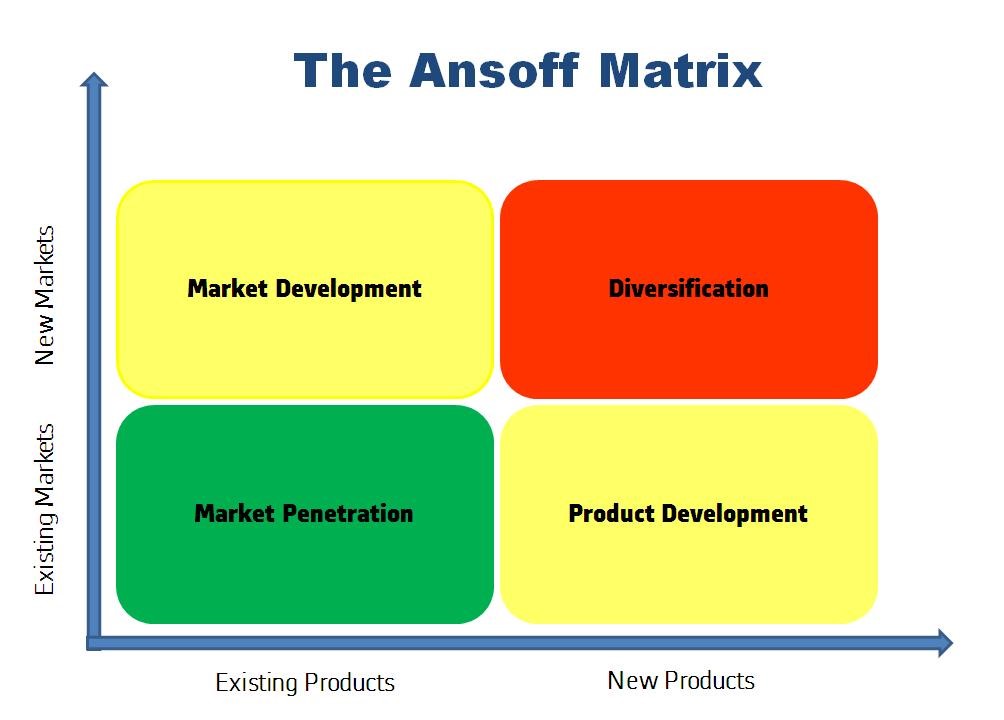Is your website’s traffic increasing, but the sales remain stagnant? Or is your problem the opposite—sales are up, but visitors are dwindling? Don’t worry – we’ve got the perfect solution to help you off the sales-traffic seesaw! SEO and CRO – Combined Approach
“The grass is always greener on the other side,” goes the classic adage.
Doing business is like that – it requires you to decide which pasture to choose. But, as a business owner, that’s not the only challenge you face. Choosing a pasture isn’t enough! Choose the wrong one, and someone will take advantage of the greener grass!
Thus, every business decision has two associated costs. The first is the cost of your chosen path, a business expense. The second is the cost of the choice you don’t make, which we call the opportunity cost.
Choosing between SEO and CRO follows this logic. Should you prioritize your website’s footfall or revenue through sales?
At LeanSummits, we advise our clients to bridge the gap between these two choices. In this blog, we’ll tell you exactly how you can deploy SEO and CRO together to harness their combined potential.
Let’s start by understanding the basics of SEO and CRO.
What is SEO?
Today, the Internet hosts more than 2 billion websites. So, how can we ensure that our intended users land on ours? Through SEO! It is the process of maximizing the odds of intended users visiting ours. It involves optimizing website content for specific keywords that users search for on the internet.
SEO is like placing needles through the haystack (our website) so that people with magnets (keywords) can find it.
However, good keyword density is only part of SEO. Its history and development can be traced back to the mid-1990s and the advent of search engines. The premise of SEO is that when it comes to solving user problems, some content and certain links are better and stronger than others.
Imagine hoping a search engine will rank your website without optimizing it through SEO tactics. It is like aiming arrows at a moving target with a blindfold on your eyes. Not only will you miss the target, but you’ll also waste all your arrows!
SEO has two additional advantages:
- First is visibility itself, which maximizes the chances of increased traffic. After all, the second page of Google is where the darkest secrets can be hidden without being found out!
- The second and related benefit is that prospects will consider your website trustworthy because it ranks on a SERP. Consistent ranking boosts the credibility and reputation of your business.
The main aims of SEO are:
- Increasing user traffic on websites,
- Reaching potential customers without paid promotion,
- Promoting the website’s visibility on the Search Engine Results Page.
Thus, good SEO is one of the sharpest tools in a business owner’s inbound sales shed. However, it is only a part of a larger strategy. Let’s see which other tool can complement it to deliver the desired results.

What is CRO?
We’ve seen that SEO can increase the visibility of your website and products. So, what comes next? Surely, the goal of your business is to earn profit via revenue generated from sales. Thus, the next step is to convert visitors into leads and leads into customers.
CRO accomplishes precisely this! It is the process of increasing the percentage of users/visitors who take a desired action. CRO involves producing and analyzing measurables for sales tactics. It also requires improving your website’s user experience.
The history of CRO can be traced back to the dot-com boom and bust in the late 1990s and early 2000s. During this period, all the hype was around merely creating websites rather than focusing on their content and quality. The architecture, appearance and materials were of secondary importance.
The dot-com crash changed this. By this time, virtually every business had a virtual address. Thus, the focus shifted to differentiation. How should you create a website that attracts users and compels them to take actions that lead to sales and signups?
CRO is the answer to this question. Here are some of the end goals of CRO:
- Encourage more form submissions that build user networks,
- Increase the number of users making purchases,
- Get more users to sign up for free trials.
When viewed together, SEO and CRO complement each other. SEO is a tool to attract prospects to your websites. CRO is a mechanic to convert them into customers and/or permanent users of your services.
Historically, business executives have taken two common approaches to CRO:
- CRO Approach 1: The Testing Approach
The testing approach is a “sling mud and see what sticks” tactic. It believes that the best way to increase the conversion rate of your website, campaign or landing page is to test its content through actual users.
It involves constantly adapting the website’s and web pages’ content by observing its success. According to the testing approach, each successive version of the content should be better than the last.
This method suits e-commerce companies, online retailers and other businesses covering several segments.
- CRO Approach 2: The Consumer-Centric Approach
The second approach follows the adage, “If you have ten hours to chop a tree, spend nine sharpening the ax.” It involves investing time to understand the audience and craft a campaign that appeals to that specific audience.
It requires you to survey the customers and understand what might capture their attention. To follow this approach, you’ll need to curate customer profiles and study their behavior before deploying a sales strategy.
This approach is ideal for companies or services that cater to niche audiences or have a specific target in mind.
The following table illustrates some of the differences between SEO and CRO:
Now that we’ve understood the differences between CRO and SEO let’s understand how we can combine them for the best results.
Components Common to (good) SEO and CRO
We have seen that SEO is geared towards increasing unpaid inbound traffic, and CRO aims to convert the leads thus generated. It is easy to see that SEO and CRO have different goals. However, if we are to combine them, we must understand the characteristics that are common to the two processes.
Here are some features common to both concepts:
1. Copy and Content
Copy refers to words websites use for captions, taglines and CTAs. Conversely, content refers to the answers or information that websites provide as answers to user queries.
Crafting creative copy and clean content is essential to CRO and SEO.
For a crawler and indexer to rank your website, its content must be accessible, understandable, structured, and easy to read.
Similarly, if you’re a prospect, you’ll only click on and purchase a website’s services if you can understand its offers.
Thus, SEO and CRO require a laser focus on curating sharp copy to lead and simple content to back it up.
2. Design
Say you’ve created the most creative copy for your website. You’ve even written comprehensive content to complement it. But still, you don’t see an uptick in either traffic or sales. One of the problems that could be causing both these metrics to plummet or remain stagnant is website design.
People respond better to information when presented in vibrant colors and thoughtful arrays. Good design makes content “snackable.”
Website design is the architecture of your virtual address. If you get it wrong, even your best products and cutting-edge content will appear out of place.

3. Site Speed
Say you’re searching for ways to combine SEO and CRO. You find this website, click on and wait. And you wait some more, but the page doesn’t load! Chances are, you’ve already jumped to another page to get your information faster.
After all, time is money! Surveys suggest that increasing the loading speed of your page from 5 seconds to 1 second can triple your conversions.
Loading speed can doubly impact your business if the internet is your primary sales channel. If your website is only a second late or slow in loading, it could cost you an order worth a hundred dollars. After all, several websites compete for customers’ business in similar segments.
Your website’s loading speed determines not only whether customers will visit it but also whether they’ll buy from it. If they’re not patient enough to access its content, how can you expect them to trust making purchases on it?
Thus, optimizing loading speed by minimizing heavy content and keeping the copy clean helps both, SEO and CRO.
4. Socials
The aim of having a virtual address is for intended users to visit and patronize it. The call is to go to the people. But where are they? Well, most of the people have their own virtual addresses in the form of their social profiles.
In pursuit of prospects and leads, businesses have also populated social networks at a steady pace. Every body corporate wants to appear as a friend in deed, an account the people can trust or a page that creates snackable content.
Thus, empathy-generating profiles that increase their social visibility are essential for businesses. They can generate visitors and increase brand credibility.
Socials don’t merely increase your business’s online footprint. People can also use their socials to share your business’s products, articles, services or reviews. Thus, they affect unpaid inbound traffic (SEO) and the number of leads and customers (CRO.)
Sometimes, well-curated socials with iconic reputations can create prospects, leads and loyal customers. They become marketing channels as well as sales funnels. Just ask Raynair Air or Paddy Power!
5. Analytics
Active SEO and CRO strategies depend on active efforts on the part of marketers and sales personnel. The tactics designed to boost SEO and increase the CRO must remain in constant flux.
This is because, first and foremost, they react to the market force we call demand. For instance, say the demand in your segment increases, but your company’s sales remain low. Here, you must analyze where the competition is outperforming your SEO strategies.
Similarly, say the demand for your products is trending upward. During this period, you must understand how and why your CRO strategy is succeeding. This is crucial if you want to replicate your success in the future by aggregating your learnings.

SEO and CRO analysis involves producing and measuring metrics such as:
- Click-through rates,
- Clicks,
- Website impressions and
- Periodic page rankings.
Thus, five elements form the fist of a good SEO and CRO strategy:
- The content and copy you put out,
- The design in which you present them,
- The speed at which the design, copy and content are available to your prospects,
- The socials you curate and
- The analytics you employ to understand SEO and CRO trends.
Having understood the features that bring SEO and CRO together, let’s find out why you, as a business owner, should combine the two approaches.
Why Should You Combine SEO and CRO Approaches?
Approaching either SEO or CRO at the cost of the other involves a sacrifice. You must choose between increasing the number of people who visit your website or the number of sales you can generate through it.
However, we strongly advocate combining the two optimization techniques for a unified approach. Here are three compelling reasons why you should consider a combined CRO-SEO strategy for your website:
1. Cost Efficiency
An old saying goes, “It takes money to make money.” It is as true today as when it was first coined. More traffic needs investment in content marketing. Similarly, increasing conversion requires a smooth web sales infrastructure. It requires investing in meaningful content and delivering a smooth website experience.
Both methods will consume your company’s time and resources if pursued independently or separately. To increase traffic, you’ll have to create the content and then position it via advertisements. To boost sales, you may have to offer discounts or other incentives.
However, combining SEO and CRO means you’re not just thinking short-term or step-by-step. Instead, you’re synergizing your approach to creating and converting leads. The combined approach can help with three different kinds of costs your company will incur in marketing and selling its products:
2. Decrease CAC
Customer Acquisition Cost is the numerical value you get by dividing the number of customers by the cost of acquiring them. If you’re spending $10,000 in discounts and advertisements and generating 20 customers, your CAC is $500.
Thus, to break even or generate profit, your product must be worth at least $500 (including the production costs).
Here, the combined approach eliminates the need for expensive advertisements. Instead, it focuses on content creation. Unlike ads, content does not cost you every time a customer sees or clicks on it. At the most, you might have to update it periodically.
Insofar as discounts are concerned, you only have to provide them if the customers undervalue your product. With this as well, the combined approach helps. SEO-generated leads must, by definition, be warmer than paid leads. Why? Because organic leads result from reputation, credibility and comprehensive content. Thus, there is less need for you to provide incentives to boost sales.
Thus, combining SEO and CRO eliminates promotion costs and reduces the need for incentives to boost sales, reducing the CAC.
3. Increased CLV
Customer Lifetime Value refers to the revenue/value a single customer generates over the period they are your customer. CLV is a good indicator of the return on investment in SEO and CRO.
This is because the acquisition cost is minimal when you attract a customer through SEO. The acquisition cost can be reduced even further if you can scale up your SEO efforts and organically attract more customers.
However, what is the role of CRO in this scenario?
CRO doesn’t just refer to converting a prospect into a lead or a lead into a customer. It also includes converting a one-time customer into a retained user and a retained user into a loyal brand ambassador.
CRO includes regularly surveying users to anticipate problems and understand their pain points. It helps introduce new, meaningful features and retain existing customers.
Thus, when combined, SEO and CRO reduce acquisition costs and increase each organic lead’s long-term value to your business.
Combining SEO and CRO will also increase marketing ROI by increasing CLV and reducing CAC.
4. Smoother Sales Funnel
Sales funnel refers to the process of attracting and closing a customer. Its stages range from triggering your product’s awareness within the buyer to making them loyal customers.
Often, there is a break or gap in this cycle. Marketing and sales strategies vary and lack harmony. The sales team looks for leads from the marketing. However, its conversion strategy departs radically from the initial marketing approach.
This gap between the marketing approach and sales strategy can often ruin the chances of closing the sale. It can even alienate a customer from making future purchases to the point of active avoidance!
Combining SEO and CRO is very beneficial here. The approach unites marketing and sales and smooths the sales funnel. Most importantly, sales-based SEO treats your website’s content as a trigger that can convert a lead into a customer. Thus, generating leads becomes a part of closing a sale rather than a separate phase.
A combined SEO-CRO approach needs your website’s content, copy, design and speed to be dedicated to generating both, traffic and sales. It assures and demands continuity between your company’s sales and marketing strategies. Thus, it indirectly impacts the sales funnel.

5. Marketing-Sales-IT Integration
Often, different departments within the same company act like different entities. They follow different logic and have different end goals. IT chases efficiency. Marketing focuses on leads. Sales pursues quarterly figures.
However, combining SEO and CRO harmonizes the marketing, sales, and IT triad. Sales-based SEO focuses on inbound marketing, so it must create leads that can easily be converted into sales.
On the other hand, CRO is a function of sales-led marketing focusing on the selling part. Thus, it must find ways of nurturing by boosting inbound marketing efforts. As a result, marketing and sales must collaborate on exercises of:
- Understanding the pain points of customers
- Curating ideal customer profiles,
- Creating incentives geared towards boosting sales.
Lastly, the marketing and sales teams must also work with IT to create a fast and user-friendly website. They must collaborate on product placement, creative design and minimal copies to aim for maximum impact.
The SEO-CRO approach thus provides the ripe fruits of traffic and revenue. It channels marketing efforts to sales and inverts the sales strategy to begin with marketing.
When deployed together, SEO and CRO can help your company’s cost efficiency, sales funnel and integration. Let’s see how you can construct a combined SEO-CRO approach for your business.
Best Practices to Combine SEO and CRO
By now, you must see the light in using SEO and CRO together while designing your website. However, Using Search Engine Optimization and Conversion Rate Optimization together can be challenging. How should you create a strategy that uses the two of them together?
Here are five best practices that can help you do just that:
1. Pick the Right CRO Strategy
As we have seen earlier, there are two CRO strategies. The first is content-centric and believes in iterating content on a website based on the responses. The second is consumer-centric. It studies different segments and groups of customers before devising a content strategy for them.

Picking the right strategy is a function of several factors, including:
- Segment
Adopting the second approach might be difficult if you’re catering to different segments. You’ll have to observe and respond to the behavior of several different segments.
On the other hand, for niche segments, the first strategy might be too wayward and wide. You’d be better off gathering customer data and devising precise strategies.
- Budget
Surveying the market even before deploying a strategy might prove costly. This is especially true if the survey proves unreliable and you have to return to the drawing board.
If you’re operating under a limited budget, you might want to start with a content-centric approach and iterate from there.
However, the consumer-centric CRO will increase your ROI if you have a vast marketing and sales budget.
- Product/Service Division
You might be better off adopting a content-centric CRO approach if you offer retail or wholesale products. Your industry will likely be competitive, and the differentiation will be widely known. Thus, your priority should be highlighting the differentiation via content-based CRO and SEO.
SaaS and B2B businesses, on the other hand, have a lower website-based conversion rate. So, for your B2B SaaS enterprise, consider a user-centric CRO. Focuses on channels where they spend the most time and which messages they best respond to.
Lastly, while creating a CRO strategy, remember to check the competitive landscape:
- How is the competition converting its leads?
- On what channels is it nurturing them?
- Can you monopolize any specific channels apart from your company’s website?
Ensure your CRO strategy doesn’t concede specific marketing channels to the competition.
2. Focus on Consumer Behavior
The rise of behavioral analytics will immensely aid you in combining SEO-CRO. Collecting cookies lets you know when and how customers search for your company, its products or intended keywords. This includes time, location, device information and much more.
Leveraging these metrics is essential for the success of SEO and CRO. Knowing when, where and how customers access your website will give you a better understanding of how to cater to them.
For instance, mobile devices account for more than half of organic traffic! Thus, you must optimize your website for mobile users because that’s where half of your prospects are!
Use heat maps and session replays to see where prospects are losing interest. Then, determine what content they find difficult to follow and refine it.
The devil of the SEO-CRO approach is in the details. Only by focusing on these finer points will you be able to maximize the advantage offered by combining SEO-CRO.

3. Optimize SEO and CRO for Intent
Not every page will convert leads into sales. Some will inform users of your products; others will only nurture existing leads. Each part of the process—information and awareness, nurturing and cultivation, and closing—is part of the sales funnel.
You must optimize each page in accordance with the function you want it to accomplish. To do this, you must understand what kind of a prospect or customer visits which page for what reason.
For instance, a business executive looking for security solutions will never click on a CTA that says, “Subscribe to our service now.” They’re more likely to do research, choose your company and book an appointment.
Thus, your goal should be to educate such a customer about your offerings by presenting them empathetically. Even if the conversion rate based on blogs might be low, it doesn’t mean that no blog ever results in a conversion!
Your SEO-CRO strategy must remain consistent. Each page must:
- Empathize with the prospect’s pain points,
- Make them aware of your offerings, and
- Lead them to a CTA that leads them to the next part of the sales funnel.
Buyer intent and motivation for visiting your page must drive how you optimize each page for the SERP and conversion.
An efficient use of CTAs is essential. Wooing prospects involves confronting them with a CTA only when you’re sure they’re ready to commit to your product. Make sure that you divide the customer profiles and segments by their motivations.
As a practice, include a purchase-oriented CTA only for a landing page that shows up in response to a purchase-oriented query. For instance when customers search “buy anti-virus software now,” your landing page must have a CTA that invites a purchase. This is the proper way of uniting SEO and CRO.
If the prospect is merely searching for the “best anti-virus software,” the CTA for the landing page should be informational. For instance, one that invites them to watch a short video on how to rank anti-virus services.
4. Curate Empathy-Generating Socials
The virtual world is today as effective as the material world in driving sales. Several problems and, therefore, their solutions arise in this virtual world. Social media is particularly helpful in such cases.
Customer-centric spaces like Instagram and TikTok:
- Increase your brand awareness when customers can find your businesses online,
- Drive up credibility when existing customers interact with your profiles,
- Enhance your reputation if you can show organic social reviews on your website,
- Engage prospects when you can involve influencers on your social media profiles.
Thus, empathy-generating socials can help customers view businesses as more than corporate entities. They help in increasing organic impressions and converting strangers into prospects. These prospects can then be converted into leads when they land on your websites.
Thus, social profiles boost SEO efforts, generating more prospects and leads. You can then use CRO strategies to convert them into customers and advocates.
5. Leverage Analytics
We have seen that behavioral analytics can help you optimize content for search and sales. Analytics, more generally, includes metrics like impressions, clicks, click-through rates and website rankings.
Constantly monitoring these figures is essential for combining SEO and CRO. Only when you know which pages rank high can you look for the positives in its content. You can determine which pages prime prospects to make purchases based on these pages.
Further, you can optimize sale-oriented CTAs depending on what pages and content attract the most users. If you notice a high bounce rate, rework the content or reduce external links.
Thus, analytics help you understand the success and failure of specific content strategies or web page designs. Check every page not performing well against content, copy, speed and design metrics. Perform the same exercise for successful pages. You must leverage the power of contemporary analytics if you want to combine SEO and CRO approaches.
Conclusion – SEO and CRO: Two Sides of the Same Coin
SEO and CRO are like two horses leading the chariot of traffic and sales. Deploying and strategizing for each of them separately is like leading them in opposite directions.
To leverage the power of SEO, you must tell good stories about your products. To maximize conversions, you must present them as empathetic solutions. Thus, both SEO and CRO need the other to perform well to deliver growth for your company.
Ready to harness their combined power to drive your company forward? Contact LeanSummits! We specialize in helping companies synergize their CRO and SEO tactics to maximize traffic and increase sales.
We can assist you in creating SEO-CRO strategies that complement your unique products and services. Don’t hesitate! Contact us now, and let’s discuss how we streamline your website’s content for seamless search and countless conversions.



